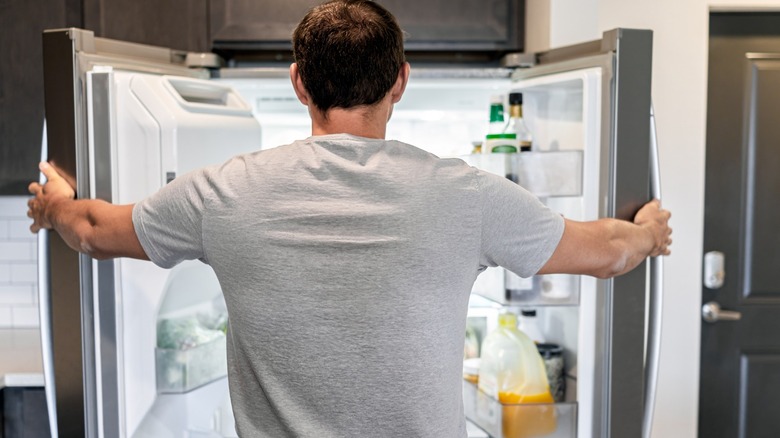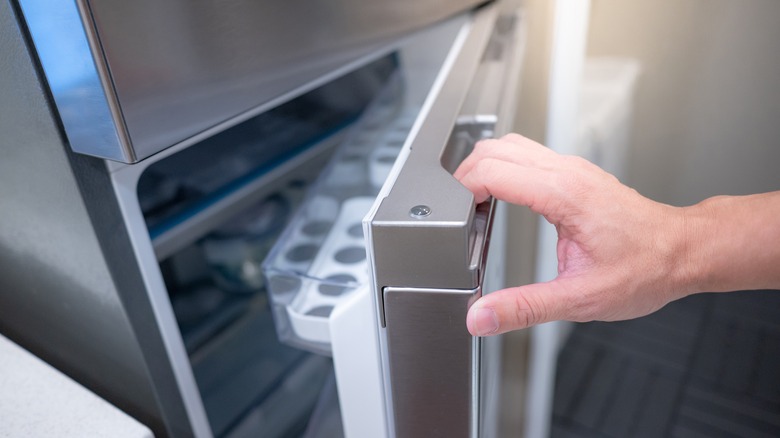Don't Make This Risky Mistake When Closing Your Refrigerator Door
A refrigerator is among the most essential kitchen appliances. By allowing you to stock up on groceries and preserve your leftover food for later use, you get to save much time and money. And, for those of us who love batch cooking, we understand how having a place to store numerous dishes of pre-cooked ingredients safely is a lifesaver.
But, to ensure your fridge functions optimally, you must take good care of it and use it correctly. This includes placing it in a well-spaced area of your kitchen, neatly organizing the food inside, and keeping it clean. But be warned, because even after taking all of these precautions, something as simple as failing to close your fridge properly can cost you money or even your health.
If you're not careful, this is one seemingly small yet risky mistake that everyone makes with their refrigerator. Maybe after putting away the groceries or leftovers from dinner and swinging the fridge door shut, you walk away thinking it's all good. But, unbeknownst to you, the rubber seal didn't land on the fridge body as it should, so your chiller remains open, albeit just a crack, and now your fridge interior is exposed to the warm air outside.
Failure to completely shut your fridge door is a risky mistake
Refrigerators work by maintaining a cold interior responsible for preserving your food — 40 degrees Fahrenheit or below is what the FDA recommends. But if you mistakenly fail to shut the door completely, you interfere with this all-important cool environment, as the cold air escapes and warm air from outside gets in. In this way, your fridge interior risks falling into the "danger zone" (temperatures between 40 and 140 degrees Fahrenheit), where bacteria easily develop and rapidly multiply, risking food spoilage – and worse, food poisoning if you consume that bad food.
To prevent this, you should always ensure the rubber strip on the refrigerator door perfectly touches the fridge body, completely sealing the door opening. And, just to be double sure, give the door a little pull as if trying to open it again; you should feel some resistance due to the magnetic gasket. Also, avoid cramming your refrigerator shelves and door, something that's commonly done with produce, as the food overflow can push on the door and interfere with that perfect sealing mechanism.

